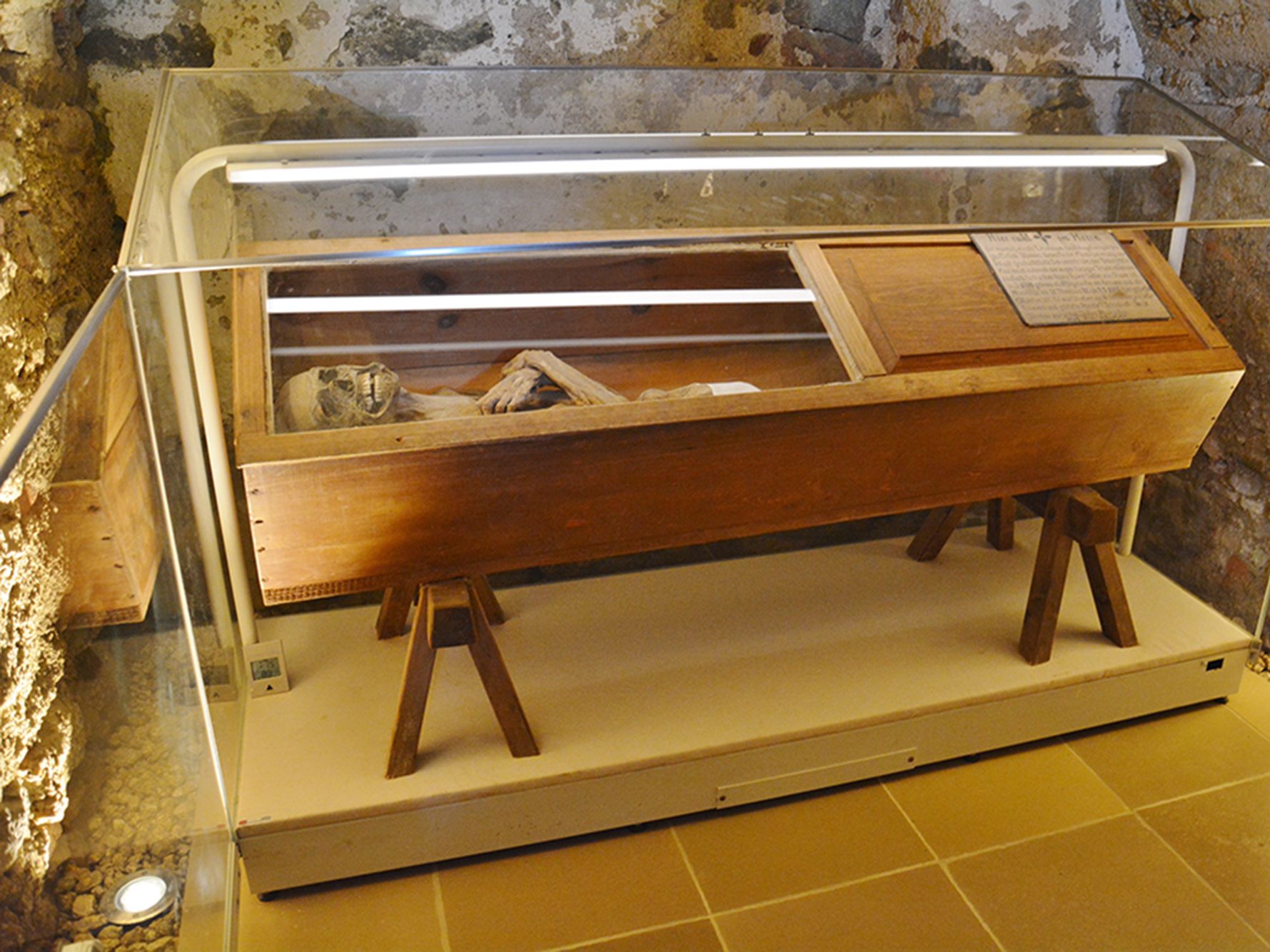Mystery of the "Air-Dried Priest" from Blasenstein Solved

A few years ago, the remains of the "air-dried priest" from St. Thomas am Blasenstein, which were already mentioned in 1830 and exhibited in the local church, were thoroughly examined by Munich experts. The team now reports on this in the journal "Frontiers in Medicine".
Stories and myths, even alleged miracle healings, surround the mummy in the Upper Austrian district of Perg. In 2017, pathologist and mummy expert Andreas Nerlich from the Ludwig Maximilian University of Munich and forensic scientist Oliver Peschel, who is also the conservation officer for the ice mummy "Ötzi", aimed to address this with detailed investigations. While the mortuary was being renovated, the team, which also included colleagues from Austria, was able to date the body using the radiocarbon method, draw conclusions about the lifestyle based on isotope analyses, and look inside the mummy using computed tomography (CT).
Anal Stuffing Created the "Air-Dried Priest" of Blasenstein
Accordingly, it is assumed, as suspected, that these are the mortal remains of the parish vicar Franz Xaver Sydler von Rosenegg, who died in 1746 at the age of 37, Nerlich explained in an interview with APA. According to the analyses, the clergyman was well-nourished during his lifetime and was a pipe smoker. The experts suspect a hemorrhage as the cause of death, and the man suffered from chronic pulmonary tuberculosis before that.
What happened after the death of the man, who was presumably well-known in the region at the time, is "scientifically of supraregional interest," said Nerlich about the motivation for the current publication, which was preceded by a book by the experts. The "excellent condition" of the 18th-century body is partly due to a targeted preservation method that is not documented anywhere else. The clergyman was demonstrably stuffed through the rectum with various materials that extracted fluid from the torso.
"Internal Embalming" with Plants, Fabric, and Zinc Sulfate
The CT scans showed, among other things, wood shavings, branches, and other plant residues as well as pieces of fabric that were introduced for this purpose. Apparently, a glass-lead bead, used for handicrafts and rosaries, was also introduced into the body. When this was discovered on an X-ray in 2000, it led to speculation that the "priest" might have been poisoned - which is not true, according to the experts. Additionally, in this form of "internal embalming" - as Nerlich put it - zinc sulfate was also used: a chemical that extracts fluid from the body. This compound, used in dye works, was also available in the Mühlviertel at that time.
Mysterious about the relatively low-threshold preservation method, which does not require opening the corpse, is that there are no written records known to the study authors. It could be that the knowledge of this practice was only passed down orally among undertakers and may have once been quite widespread. Perhaps the approach was not much discussed out of reasons of piety.
Preservation Intended Only for Shorter Time Span
However, it is clear that the intention was not to preserve a body for eternity, as the ancient Egyptians aimed to do, said Nerlich. It was likely more about protecting the deceased from the onset of decay for a longer public viewing or transport. In the case of Sydler, it might have been planned to bring him to the crypt of the Waldhausen Abbey in Strudengau, where he was an Augustinian monk. The preservation state of the "air-dried pastor" also shows similarities to three partial mummies located there.
It is confirmed that the corpse was never placed in a grave. Otherwise, the 1.71-meter-long and around ten-kilogram mummy would not be so well preserved today. The supposedly "air-dried pastor" must have rather lain for a long time with little air supply, perhaps in a coffin. Maybe it was simply forgotten in the church for some time, speculates Nerlich.
Good Prognosis: Mummy Could Endure for a Long Time
The mysterious embalming method still has an effect: The torso is better preserved than the head and legs. If the current situation of the display remains the same, mummy expert Nerlich gives the "air-dried pastor" good chances of enduring as a mummy for a long time. For archaeologists, the findings on the embalming are quite interesting: If one finds traces of fabric and plant remains in old graves, one could also consider that this previously undescribed type of stuffing was applied.
(APA/Red)
This article has been automatically translated, read the original article here.





